
On June 19, the federal government announced the 2020-2021 recipients of the Vanier Canada Graduate Scholarships and Banting Postdoctoral Fellowships. These awards are Canada’s most prestigious awards for doctoral students and postdoctoral fellows.
Nineteen McGill graduate students earned Vanier Scholarships, worth $50,000 each year for three years of study and research. The eight McGill Banting Fellows each receive $70,000 a year for up to two years of research.
Launched in 2008, the Vanier Scholarship program help Canadian institutions attract and retain highly qualified doctoral students in the social sciences and humanities, natural sciences and/or engineering and health research, establishing Canada as a global centre for research excellence and higher training. Recipients of the Vanier Canada Graduate Scholarships demonstrate leadership skills and a high level of scholarly achievement in graduate studies.
McGill’s 2020 Vanier Scholars and a synopsis of their research:
Heather Anderson, Anthropology
Space for Listening: An Ethnography of the Australian Radio Quiet Zone
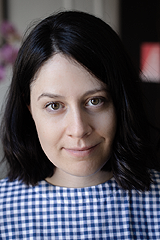 My doctoral research is an ethnography of the Australian Radio Quiet Zone (ARQZ)—a place where radio bandwidth use is restricted to facilitate the detection of cosmic phenomena by radio-astronomy infrastructure. I interrogate the relationship between this astronomical “listening” and the settler-colonial landscape in which it takes place. I also explore the ARQZ as a space for other modes and practices of listening: of bureaucrats and lawyers to indigenous Traditional Owners, and of Traditional Owners to the landscape itself.
My doctoral research is an ethnography of the Australian Radio Quiet Zone (ARQZ)—a place where radio bandwidth use is restricted to facilitate the detection of cosmic phenomena by radio-astronomy infrastructure. I interrogate the relationship between this astronomical “listening” and the settler-colonial landscape in which it takes place. I also explore the ARQZ as a space for other modes and practices of listening: of bureaucrats and lawyers to indigenous Traditional Owners, and of Traditional Owners to the landscape itself.
In the context of decolonization efforts in Australia, my research is important for its critical approach to astronomical science—a field of knowledge that self-consciously appeals to a “universal humanity.” Crucially, the relevance of this research is not limited to Australia, as recent protests against the construction of Hawaii’s Thirty Meter Telescope highlight. (Photo courtesy of: Simon Kessler)
Mahmoud Assran, Electrical and Computer Engineering
Co-Supervised Learning Algorithms
 Many learning frameworks in the field of Artificial Intelligence (AI) appear to be incomplete, and independently insufficient, for modelling the gamut of human learning potential. A lot of my work with youth on education has inspired my research and approach to improving learning algorithms, and better modelling the salient factors necessary for producing intelligent agents. Building on related work in education such as Social Cognitive Theory and Social Development Theory, I believe that part of the missing piece is social context and diversity.
Many learning frameworks in the field of Artificial Intelligence (AI) appear to be incomplete, and independently insufficient, for modelling the gamut of human learning potential. A lot of my work with youth on education has inspired my research and approach to improving learning algorithms, and better modelling the salient factors necessary for producing intelligent agents. Building on related work in education such as Social Cognitive Theory and Social Development Theory, I believe that part of the missing piece is social context and diversity.
In my PhD research, I will explore multi-agent approaches for building social context and diversity into learning algorithms. A diverse set of AI agents that learn from independent experience while simultaneously learning to communicate with one another may be able to learn more efficiently (with less time, energy, and data) than single-agent frameworks, and maybe be able to derive more robust representations relating to semantic concepts in data.
Émile Brisson-Curadeau, Natural Resource Sciences
Impact of Extreme Climatic Events on the Foraging Behaviour and Breeding Success of the King Penguin
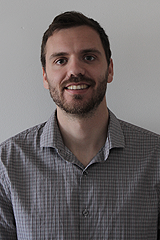 Extreme climatic events such as El Niño have strong effects on Antarctic Ocean wildlife, effecting changes in the distribution and abundance of the primary producers that reverberate to the top of the food chain. Monitoring effects on top predators could therefore provide information on the density and distribution of a range of prey, especially if their foraging behaviour and population dynamics are good indicators of the population dynamics of lower trophic levels. The king penguin is a good candidate for being an indicator species in the Antarctic Ocean.
Extreme climatic events such as El Niño have strong effects on Antarctic Ocean wildlife, effecting changes in the distribution and abundance of the primary producers that reverberate to the top of the food chain. Monitoring effects on top predators could therefore provide information on the density and distribution of a range of prey, especially if their foraging behaviour and population dynamics are good indicators of the population dynamics of lower trophic levels. The king penguin is a good candidate for being an indicator species in the Antarctic Ocean.
My research consists of examining how the consequences of climatic extremes on the food web affect the breeding success and foraging behaviour of king penguins. My research will determine the mechanisms between extreme climatic events, wildlife distribution and fitness, which will help in the design of protected areas that consider the spatial responses of predator-prey relationships to these events
Kyla Brophy, Educational and Counselling Psychology
Self-Compassion and Emotion Regulation: Deciphering the Pathways to Well-Being
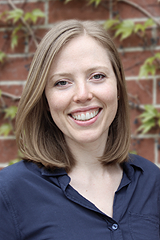 My research investigates factors that support well-being and resilience during challenging life periods, particularly self-compassion. People who are more self-compassionate report lower levels of stress, increased well-being, enhanced creativity, and greater motivation to pursue their goals. These results have been observed in people of different ages, genders, sexual orientations, and cultural backgrounds. Learning to be more self-compassionate has great potential to support mental health, but more research is needed to understand how self-compassion functions in order to develop effective interventions.
My research investigates factors that support well-being and resilience during challenging life periods, particularly self-compassion. People who are more self-compassionate report lower levels of stress, increased well-being, enhanced creativity, and greater motivation to pursue their goals. These results have been observed in people of different ages, genders, sexual orientations, and cultural backgrounds. Learning to be more self-compassionate has great potential to support mental health, but more research is needed to understand how self-compassion functions in order to develop effective interventions.
My dissertation examines the relationship between self-compassion and emotion regulation, and how self-compassion may help individuals experience and respond to difficult emotions. Results will provide empirical insight into the pathways through which self-compassion impacts distress and well-being, and how different emotion regulation competencies influence these pathways. This work will contribute to developing effective interventions (e.g., workshops, mobile apps) for use by social service providers, educators, mental health professionals, and the public. (Photo courtesy of: Tanner Zekonic)
Durbis Castillo Pazos, Chemistry
Shedding light on chemistry: Delivering better and cheaper therapeutics through light-assisted reactions
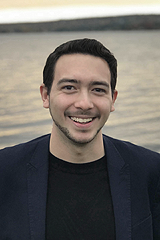 The construction of new molecules is as complicated as the construction of a bridge: Every piece is meticulously placed, and the overall arrangement of the pieces gives a unique structure, stability, and function. Once a bridge is built, however, making selective modifications that could improve the overall stability and structure are complicated to achieve. In synthetic organic chemistry, such modifications performed to a complex molecular architecture is known as late-stage functionalization, a strategy that is crucial in the development of new compounds with pharmaceutical applications. Nowadays, this strategy relies on the use of expensive and non-recyclable metal-based catalysts and additives. These caveats can be addressed by photochemistry, where a light source, such as a lightbulb or LEDs, can be used as a greener alternative.
The construction of new molecules is as complicated as the construction of a bridge: Every piece is meticulously placed, and the overall arrangement of the pieces gives a unique structure, stability, and function. Once a bridge is built, however, making selective modifications that could improve the overall stability and structure are complicated to achieve. In synthetic organic chemistry, such modifications performed to a complex molecular architecture is known as late-stage functionalization, a strategy that is crucial in the development of new compounds with pharmaceutical applications. Nowadays, this strategy relies on the use of expensive and non-recyclable metal-based catalysts and additives. These caveats can be addressed by photochemistry, where a light source, such as a lightbulb or LEDs, can be used as a greener alternative.
I herein propose the use of visible light to enable the late-stage functionalization of complex molecular architectures, ultimately aiming for the installation of fluorine atoms, which remains a frontier in the world of synthetic chemistry. This project will enable a cost-effective construction of elusive molecules that will help advance the development of drug discovery. (Photo courtesy of: Rodrigo Mendoza/ Eva Macaluso)
Maria Ceballos-Bedoya, Law
Women’s Place(s): A Socio-Legal Analysis of Gender Inequalities in the Colombian Judiciary
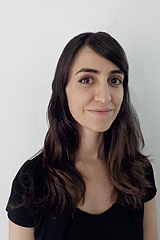 In many countries, an increasing number of women are deciding to become lawyers, but they are rarely found occupying the best judicial positions. Colombia is not an exception to this global trend. My research asks two questions: where exactly are female and male judges situated within the structure of the Colombian judiciary and why do women seem to be disproportionately accessing poorly valued judicial positions rather than highly valued positions. These questions are framed in the context of a state with severe capacity problems, where corruption and informal rules are particularly prevalent.
In many countries, an increasing number of women are deciding to become lawyers, but they are rarely found occupying the best judicial positions. Colombia is not an exception to this global trend. My research asks two questions: where exactly are female and male judges situated within the structure of the Colombian judiciary and why do women seem to be disproportionately accessing poorly valued judicial positions rather than highly valued positions. These questions are framed in the context of a state with severe capacity problems, where corruption and informal rules are particularly prevalent.
I intend to explore these questions through the lens of feminist legal theories, which will allow me to examine gender biases in judicial selection processes. This project aims to enhance the visibility of female judges and formulate recommendations to ensure women’s equal access into the Colombian judiciary (and, where possible, to extrapolate said recommendations to countries like Canada).
Sienna Drake, Integrated Program in Neuroscience
Understanding the neuro-immune: characterization of the epigenetic regulation by chromatin of the neuronal transcriptome underlying the expression of neuro-protective gene networks in response to chronic inflammatory insult in a mouse model of multiple sclerosis
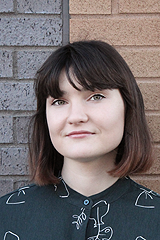 Neurodegeneration is the best correlate to clinical disability in multiple sclerosis (MS), but there is a lack of understanding about its underlying mechanisms. A cell can be simplified as DNA (code), and RNA and proteins (programs). An external input – inflammation for example – may lead to changes in what parts of the code are run, causing expression of a degenerative program. Cells also have protective programs, but how or why one program prevails over another is not well understood.
Neurodegeneration is the best correlate to clinical disability in multiple sclerosis (MS), but there is a lack of understanding about its underlying mechanisms. A cell can be simplified as DNA (code), and RNA and proteins (programs). An external input – inflammation for example – may lead to changes in what parts of the code are run, causing expression of a degenerative program. Cells also have protective programs, but how or why one program prevails over another is not well understood.
By characterizing changes occurring in both DNA and RNA of neurons in response to injurious or regenerative inflammation, I aim to identify how neurons initiate degenerative or protective programs. This understanding may identify new druggable targets to promote intrinsic expression of neuroprotective programs or dampen neurodegenerative gene expression. Since no drugs currently exist addressing neurodegeneration in MS, this study aims to bring new possibilities to the future of MS treatment. (Photo courtesy of: Kim Gruver)
Kaitlyn Easson, Integrated Program in Neuroscience
Quantification of Long-Term White Matter Maturation in Survivors of Neonatal Critical Illness
 Infants born preterm or with congenital heart disease (CHD) frequently present with a characteristic pattern of white matter injury. It has been hypothesized that these early-life brain injuries may have long-term consequences on the maturation of white matter at the cellular level, which could be linked to the persistent neuropsychological impairments experienced by survivors of preterm birth and CHD.
Infants born preterm or with congenital heart disease (CHD) frequently present with a characteristic pattern of white matter injury. It has been hypothesized that these early-life brain injuries may have long-term consequences on the maturation of white matter at the cellular level, which could be linked to the persistent neuropsychological impairments experienced by survivors of preterm birth and CHD.
My doctoral research uses advanced magnetic resonance imaging techniques to detect alterations in the microscopic structure of white matter in youth born preterm or with CHD, and examines the extent to which these alterations are associated with neuropsychological outcomes. Establishing specific white matter alterations as novel biomarkers of neuropsychological impairments in these clinical populations could facilitate early diagnosis of these deficits, and subsequently promote the development of new therapeutic approaches to ameliorate the transition of these at-risk youth into successful and independent adult life.
Erin Gibbons, Earth and Planetary Science
Spectral Properties of Clay Minerals to Enhance in-situ Planetary Exploration
 The question of whether or not life exists beyond Earth is one of the major unanswered questions of the natural sciences. Mars represents a compelling natural laboratory in which we can begin to unravel this mystery. It is accessible (only a few moths travel from Earth) and its ancient rocks reveal evidence for a long, diverse history of liquid water, suggesting that environmental conditions may have supported life in the past. In the very near future, a sophisticated fleet of rovers will arrive at Mars with the explicit goal of seeking signs of life.
The question of whether or not life exists beyond Earth is one of the major unanswered questions of the natural sciences. Mars represents a compelling natural laboratory in which we can begin to unravel this mystery. It is accessible (only a few moths travel from Earth) and its ancient rocks reveal evidence for a long, diverse history of liquid water, suggesting that environmental conditions may have supported life in the past. In the very near future, a sophisticated fleet of rovers will arrive at Mars with the explicit goal of seeking signs of life.
Erin’s research is dedicated to maximizing the likelihood that these missions succeed. She is testing a variety of laser spectroscopy techniques to enhance our ability to remotely identify clay minerals on Mars. Clay minerals may hold the key to discovering Martian life because they provide evidence of past hydrous systems and have been shown to improve the preservation of fossil remains.
Justin Lessard-Wajcer, Integrated Program in Neuroscience
Electrophysiological alarm signals of neurodevelopmental disorders
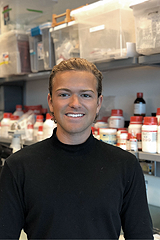 Neurodevelopmental disorders (NDD’s) are a group of conditions characterized by a delay or disturbance in the acquisition of skills in a variety of developmental domains. In children, diagnoses include attention deficit hyperactivity disorder, autism spectrum disorder, global developmental delay, and intellectual disability.
Neurodevelopmental disorders (NDD’s) are a group of conditions characterized by a delay or disturbance in the acquisition of skills in a variety of developmental domains. In children, diagnoses include attention deficit hyperactivity disorder, autism spectrum disorder, global developmental delay, and intellectual disability.
My team and I aim to identify and validate biomarkers and their physical links to genetic risks which would be essential in diagnosis, developmental outcome prediction, and eventually in treatment response monitoring. We will thus use EEG signal processing algorithms in order to extract biomarkers of brain neurodevelopment in healthy controls and different groups of patients. For this, we collected datasets of more than 300 infants, children and adults presenting genetic risk factors for cognitive impairments and autism disorder. Insights gained from such EEG studies will contribute significantly to the understanding of NDDs, genetic factors and to the development of biomarkers that can assist with diagnosis, prognosis, and intervention.
Calwing Liao, Human Genetics
Identifying the differences in single-cell transcriptomes between schizophrenia, bipolar disorder, and healthy individuals in the anterior cingulate cortex

Schizophrenia and bipolar disorder are two psychiatric disorders that greatly diminish the quality of life in affected individuals. Although researchers have implicated several diseased brain regions, pinpointing aberrant cell types can be difficult. My research aims to understand several questions about schizophrenia and bipolar disorder by genome and single-cell sequencing hundreds of patient brain tissue samples. First, how do large deletions and duplications of DNA affect single cell gene expression? Second, can a burden of common genetic risk variants (polygenic risk) alter single cell gene expression? By integrating genomic and single-cell data, we will be able to understand the molecular consequences of these genetic changes at a single cell resolution and identify which cell types may be disease relevant.
Mackenzie Michell-Robinson, Integrated Program in Neuroscience
Investigating the role of POLR3 in oligodendrocyte-lineage development and myelination in vivo: Translational disease models and proof-of-concept for using in vivo gene therapy to treat POLR3-related Hypomyelinating Leukodystrophy
No further information available.
Stephanie Mouchbahani Constance, Physiology
Identification of the algogenic toxin in lionfish venom and its mechanism of action
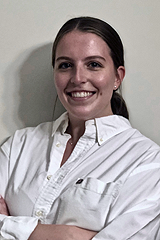 The wealth of biodiversity in the world’s library of venoms and their toxins represents an enormous untapped resource that contains the scaffolds for the next generation of therapeutic s. Within the realm of venoms that have been studied, marine venoms represent only a small minority in comparison to those of insects and snakes. The red lionfish (Pterois volitans) is a venomous species responsible for one of the most painful stings in the ocean. There exists no anti-venom for its stings because the venom and its mechanism of action remain unknown.
The wealth of biodiversity in the world’s library of venoms and their toxins represents an enormous untapped resource that contains the scaffolds for the next generation of therapeutic s. Within the realm of venoms that have been studied, marine venoms represent only a small minority in comparison to those of insects and snakes. The red lionfish (Pterois volitans) is a venomous species responsible for one of the most painful stings in the ocean. There exists no anti-venom for its stings because the venom and its mechanism of action remain unknown.
Using electrophysiology and molecular techniques, I will uncover the molecular basis for the pain caused by lionfish venom. Furthermore,I will interrogate the specific molecular changes that predators of the lionfish have evolved which allow them to consume the lionfish unharmed. These insights will allow me to identify pharmaceutical targets for the development of specific and efficient pain treatments.
Ermanno Napolitano, Law
Geoengineering: Establishing the Legal Conditions for its Legitimate Deployment
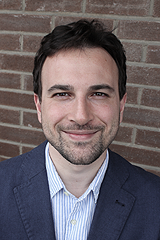 Humanity has a deeply discouraging collective record of failure in addressing the consequences of our accumulated emissions, and states are on track to exceed the 1.5C° objective established under the Paris Agreement. Geoengineering, the deliberate large-scale manipulation of the earth’s atmosphere to reduce global warming, could, in principle, quickly produce temperature reductions that last for years, and some geoengineering techniques are relatively inexpensive and within the reach of any State or large corporation. However, geoengineering deployment may cause undesired effects that, although envisaged as less dangerous than global warming, could bring serious consequences.
Humanity has a deeply discouraging collective record of failure in addressing the consequences of our accumulated emissions, and states are on track to exceed the 1.5C° objective established under the Paris Agreement. Geoengineering, the deliberate large-scale manipulation of the earth’s atmosphere to reduce global warming, could, in principle, quickly produce temperature reductions that last for years, and some geoengineering techniques are relatively inexpensive and within the reach of any State or large corporation. However, geoengineering deployment may cause undesired effects that, although envisaged as less dangerous than global warming, could bring serious consequences.
Further, a recent return to nationalist currents makes plausible the hypothesis that geoengineering may arise under a unilateral state of exception to international law, however misguided and imprudent. The thesis intends to establish those legal conditions necessary to produce the possibility of legitimizing the deployment of geoengineering within a sound legal framework without giving way to unilateral actions. (Photo courtesy of: Lily-Cannelle Mathieu)
Eugene Ofosu, Psychology
Causes and consequences of the biases of millions in a similar geographic area
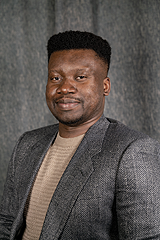 Only recently have researchers begun examining the “biases of crowds.” Meaning, studying the biases of thousands of people in a geographic area to assess “how prejudiced” a location is, and the outcomes that might be associated with places higher or lower in these prejudices. Research using this approach has found relationships with outcomes that can’t be studied in a laboratory, i.e. number of Black people killed by police, infant mortality rates, segregated housing, and cardiovascular death rates. What environmental factors cause it? Are all different types of biases (e.g., anti-Black, anti-Asian, anti-gay) caused by similar situations? To extent should we think of regional bias as a product of the environment rather than as an individual difference?
Only recently have researchers begun examining the “biases of crowds.” Meaning, studying the biases of thousands of people in a geographic area to assess “how prejudiced” a location is, and the outcomes that might be associated with places higher or lower in these prejudices. Research using this approach has found relationships with outcomes that can’t be studied in a laboratory, i.e. number of Black people killed by police, infant mortality rates, segregated housing, and cardiovascular death rates. What environmental factors cause it? Are all different types of biases (e.g., anti-Black, anti-Asian, anti-gay) caused by similar situations? To extent should we think of regional bias as a product of the environment rather than as an individual difference?
This research will examine the nature of different types of regional prejudices, see how they are related to one another, and explore situational factors that might be more likely to give rise to prejudice. (Photo courtesy of: Darren Agboh: dagboh.com)
Haitham Shoman, Experimental Surgery
The strategies to acquire and introduce innovative orthopaedic technology and its impact on the Canadian healthcare system, patient’s quality of life and on society
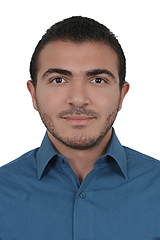 Living in a fast-paced industrialized world, keeping up with advancements and people’s needs has been the center of most developed nations. Innovations in healthcare has been growing over the past decades. They have been seen as solutions to conventional treatment strategies in surgery specifically to improve patient outcomes, shorten hospital stays, provide a value-added benefit to society by increasing productivity in the work place and a return on investment in the public health system spending. Innovations aid in lowering down: costs needed for future complications and length of hospital stays.
Living in a fast-paced industrialized world, keeping up with advancements and people’s needs has been the center of most developed nations. Innovations in healthcare has been growing over the past decades. They have been seen as solutions to conventional treatment strategies in surgery specifically to improve patient outcomes, shorten hospital stays, provide a value-added benefit to society by increasing productivity in the work place and a return on investment in the public health system spending. Innovations aid in lowering down: costs needed for future complications and length of hospital stays.
Canada’s health system with its fixed budgets, needs to be more responsive on the rapid uptake and usage of innovations. This study aims to develop guidance in strategies for the introduction of innovative technologies in orthopaedic surgery into the Canadian healthcare system through assessment of the impact of catalytic innovations on the Canadian healthcare system, patient’s outcomes and society productivity.
Lashanda Skerritt, Family Medicine
Assessing the Reproductive Healthcare Needs and Priorities of Women Living with HIV in Canada
 My doctoral research aims to produce much-needed evidence to support high-quality reproductive healthcare for women living with HIV. With advances in treatment, HIV is no longer a death sentence. People are living longer, healthier lives with HIV compared to the early years of the epidemic, leading to a shift in the reproductive health needs of people living with HIV, particularly women. Women, who make up nearly a quarter of the people living with HIV in Canada today and over half of the people living with HIV globally, have similar reproductive desires to HIV negative women.
My doctoral research aims to produce much-needed evidence to support high-quality reproductive healthcare for women living with HIV. With advances in treatment, HIV is no longer a death sentence. People are living longer, healthier lives with HIV compared to the early years of the epidemic, leading to a shift in the reproductive health needs of people living with HIV, particularly women. Women, who make up nearly a quarter of the people living with HIV in Canada today and over half of the people living with HIV globally, have similar reproductive desires to HIV negative women.
Women living with HIV, however, often receive sub-par reproductive healthcare, contributing to higher rates of unwanted or unsafe pregnancies and stigmatizing experiences. Drawing on data from a longitudinal cohort study designed by, for and with women living with HIV in Canada, my research aims to understand gaps in care and identify strategies to address them. (Photo courtesy of: Yonatan Morocz)
Vivienne Tam, Mining and Materials Engineering
Toward a more personalized treatment of aggressive brain cancer: light-controlled delivery of chemotherapy drugs
 My research investigates light as a stimulus to trigger chemotherapy release for an aggressive form of brain cancer called glioblastoma multiforme. In my system, a core nanoparticle converts safe, invisible, near-infrared light to a higher energy ultraviolet light. The nanoparticle is coated with a polymer that is covalently attached to the chemotherapy drug for brain cancer, temozolomide, via a photolinker that disintegrates in response to the converted ultraviolet light. Temozolomide is then released on-demand when near-infrared light is directed to the nanoparticle. The amount of drug released and its rate of release can be precisely tuned using laser power and irradiation time.
My research investigates light as a stimulus to trigger chemotherapy release for an aggressive form of brain cancer called glioblastoma multiforme. In my system, a core nanoparticle converts safe, invisible, near-infrared light to a higher energy ultraviolet light. The nanoparticle is coated with a polymer that is covalently attached to the chemotherapy drug for brain cancer, temozolomide, via a photolinker that disintegrates in response to the converted ultraviolet light. Temozolomide is then released on-demand when near-infrared light is directed to the nanoparticle. The amount of drug released and its rate of release can be precisely tuned using laser power and irradiation time.
This project will develop a technology to make precise temporal control of chemotherapy delivery possible, and thus pave the way for personalized treatment for glioblastoma patients, a major step towards improving the poor prognosis of the disease.
Wahéhshon Shiann Whitebean, Integrated Studies in Education
Multi-generational stories of Indian Day Schooling in Kahnawà:ke: Assessing impacts on Indigenous language and cultural identity transmission
 Indigenous voices have been largely omitted from Canadian history. Canada has a long colonial legacy with much of the efforts to assimilate Indigenous peoples into dominant Euro-Canadian society focused on Indigenous children, primarily through institutions such as Residential Schools and Indian Day Schools. These practices resulted in pain and trauma that continues to affect Indigenous families and communities today. As a Kanien’kehá:ka woman from Kahnawà:ke and Indigenous researcher, I am undertaking this study to ensure that our voices are heard. This research examines Indian Day Schools as sites of Indigenous acculturation. The objective is to understand impacts of Indian Day Schools from the perspective of former students and to contextualize prevailing attitudes and obstacles to present-day Indigenous language and culture revitalization.
Indigenous voices have been largely omitted from Canadian history. Canada has a long colonial legacy with much of the efforts to assimilate Indigenous peoples into dominant Euro-Canadian society focused on Indigenous children, primarily through institutions such as Residential Schools and Indian Day Schools. These practices resulted in pain and trauma that continues to affect Indigenous families and communities today. As a Kanien’kehá:ka woman from Kahnawà:ke and Indigenous researcher, I am undertaking this study to ensure that our voices are heard. This research examines Indian Day Schools as sites of Indigenous acculturation. The objective is to understand impacts of Indian Day Schools from the perspective of former students and to contextualize prevailing attitudes and obstacles to present-day Indigenous language and culture revitalization.
My research centralizes Kanien’kehá:ka life stories about navigating historic and multigenerational trauma while demonstrating identity reclamation, healing, and resilience.
**********
The Banting Postdoctoral Fellowships provide research funding to the very best postdoctoral applicants, both nationally and internationally, who will positively contribute to Canada’s economic, social and research-based growth.
McGill’s 2020 Banting Fellows and a synopsis of their research:
Honor Bixby, Population Health
Comprehensive analysis of health inequalities in global cities
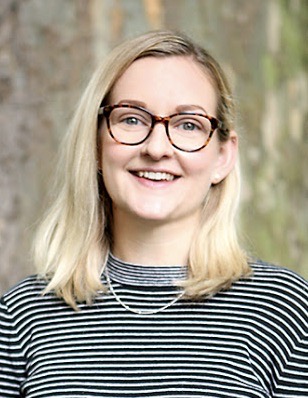 More people than ever live in cities, a statement that will be as true tomorrow as it is today. Since 1950, the global urban population has grown by over 450% and is currently estimated at 4.2 billion. Urban physical, economic and social environments can have unique impacts on human health. The impacts of urban living are not however the same for all countries, nor are they experienced equally by those living within cities, where better average health (compared to rural populations) often masks large within-city health inequalities.
More people than ever live in cities, a statement that will be as true tomorrow as it is today. Since 1950, the global urban population has grown by over 450% and is currently estimated at 4.2 billion. Urban physical, economic and social environments can have unique impacts on human health. The impacts of urban living are not however the same for all countries, nor are they experienced equally by those living within cities, where better average health (compared to rural populations) often masks large within-city health inequalities.
Cities across all regions bring together the richest and poorest in society with poor health often concentrated in the most deprived neighbourhoods and the lowest socioeconomic groups accounting for a disproportionate burden of disease and mortality. As a Banting fellow, I aim to understand how cities across different settings can be leveraged to improve the health of low-income groups and improve health equity. Using data from five case study cities, each with unique characteristics and histories and from different world regions: Accra (Ghana), Beijing (China), Dhaka (Bangladesh), London (UK) and Vancouver (Canada) to address three important questions:
- What are the health characteristics of the poorest urban groups compared to the richest?
- What is the variability of health outcomes within the poorest neighbourhoods?
- Which diseases and injuries contribute the most to urban life expectancy inequalities between the richest and the poorest?
This will generate novel information crucial to the design and implementation of suitable policies and interventions that target those falling behind in today’s cities and, the evaluation of their impact.
Pierre-Luc Brisson, History and Classical Studies
Fear: A Study on the Impacts of International Unipolarity on Rome’s Decision-Making Process in the Second Century BCE (200-146 BCE), and the Role of Fear as a Political and Social Construct Within Roman Public Opinion
 Pierre-Luc Brisson is working under the supervision of Prof. Michael Fronda at the Department of History and Classical Studies of McGill Universtiy. Previously, Dr. Brisson received a Vanier Canada Graduate Scholarship (2017-2020) and two doctoral fellowships granted by the prestigious École française de Rome (2018, 2019). His work adopts an interdisciplinary approach to the study of Roman imperialism at the intersection of international relations studies and classical history.
Pierre-Luc Brisson is working under the supervision of Prof. Michael Fronda at the Department of History and Classical Studies of McGill Universtiy. Previously, Dr. Brisson received a Vanier Canada Graduate Scholarship (2017-2020) and two doctoral fellowships granted by the prestigious École française de Rome (2018, 2019). His work adopts an interdisciplinary approach to the study of Roman imperialism at the intersection of international relations studies and classical history.
In line with his previous work on international unipolarity in the Ancient world, Dr. Brisson will analyze the impact of fear as an inherent consequence of the unipolar structure of the Mediterranean world in the first half of the 2nd century BC (200-146 BC). Particularly, he will explore the role of fear in the decision-making process of the Roman political class, and its impact on the assemblies of the Roman people. Thus, Dr. Brisson aims to contribute to the larger discussion on the value of psychology to the study of international relations, and the role of perceptions in the maintenance of peace under international unipolarity. (Photo courtesy of Clément Salviani)
Roberta Cagnetta, Biochemistry
Role and regulatory mechanisms of pre- versus post-synaptic mRNA translation in memory formation and retrieval within glutamatergic neurons of an intact neural circuit
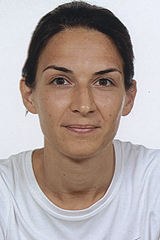 One of the most fundamental properties of the brain is the ability to make and recall memories, from minutes to years. The incidence of memory impairment (~8% among Canadians aged 75 and older) is escalating with population aging. To tackle this problem it is fundamental to understand the molecular mechanisms underpinning memory.
One of the most fundamental properties of the brain is the ability to make and recall memories, from minutes to years. The incidence of memory impairment (~8% among Canadians aged 75 and older) is escalating with population aging. To tackle this problem it is fundamental to understand the molecular mechanisms underpinning memory.
As a Banting Fellow, supervised by Prof. Nahum Sonenberg, I will investigate the mRNA translational changes and control mechanisms underlying the process of memory at single cell type resolution and at synaptic level within an intact circuit. Furthermore, I will examine the function of mRNA candidates translated at the synapse in response to neuronal activity and in memory. This study will bring invaluable insight to our understanding of the processes underpinning memory and neural circuit maintenance, setting the stage to developing precision therapeutic approaches, with significant implications for the improvement of population health.
Omur Dagdeviren, Physics
Revealing the Exciton Dynamics and Challenging the Existence of Trapped-Excitons
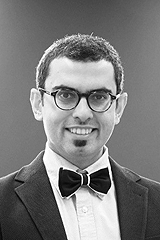 Atomically thin structures are being explored both for fundamental research and applications. For this reason, optoelectronic properties are important for energy, communication, and computing technologies; however, light-matter interaction is the main limiting factor for the operation and the lifetime of devices. As a Banting Fellow, I propose to investigate the light-matter interactions in thin structures by locally measuring the time-resolved formation and decay of excitons (electron-hole pair bound via the electrostatic Coulomb interaction). Current optoelectronic experiments only measure properties averaged over large areas or volumes. Such averaging impedes having a conclusive understanding of local optoelectronic properties. In particular, it is not well understood how different, heterogeneous interfaces and associated defects in these material systems alter the local optoelectronic properties and thus the relevant governing physical principles at atomic length scales.
Atomically thin structures are being explored both for fundamental research and applications. For this reason, optoelectronic properties are important for energy, communication, and computing technologies; however, light-matter interaction is the main limiting factor for the operation and the lifetime of devices. As a Banting Fellow, I propose to investigate the light-matter interactions in thin structures by locally measuring the time-resolved formation and decay of excitons (electron-hole pair bound via the electrostatic Coulomb interaction). Current optoelectronic experiments only measure properties averaged over large areas or volumes. Such averaging impedes having a conclusive understanding of local optoelectronic properties. In particular, it is not well understood how different, heterogeneous interfaces and associated defects in these material systems alter the local optoelectronic properties and thus the relevant governing physical principles at atomic length scales.
To fill the gap for this fundamental problem, I will concentrate on the heterostructures of transition-metal dichalcogenides and conduct time-resolved scanning probe microscopy measurements to reveal the effect of spatially periodic potential variations of the sample on excitons. My experiments, which correlate physical properties at the ultimate spatial and temporal limits will not only resolve long-lasting scientific problems of charge generation, transport, and storage in complex material systems but will also have an impact on the environment as an enhanced understanding of optoelectronic properties is the premier requirement for nanophotonics, quantum information, and sustainable renewable energy applications.
Mohamed Eldeeb, Neurology and Neurosurgery
Structure of human PINK1-TOM complex by single-particle cryo-EM
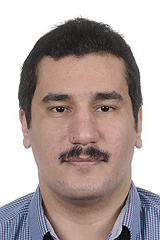 Mitochondrial damage plays an important role in the development of Parkinson’s disease (PD). PD is caused by the death of specific kind of neurons, which regulate muscle movement and coordination. To do their job properly, these nerve cells require large amounts of energy, provided by mitochondria. In normal subjects, when mitochondria are damaged, an enzyme called PINK1 charges to the scene of a mitochondrial damage. Like a firefighter, PINK1 first receives a signal and then goes through a series of steps to label the damaged mitochondria, so that these mitochondria are selectively removed. However, in PD, PINK1 doesn’t perform its function properly. This leads to increase in mitochondrial damage. Notably, we don’t know much details about how PINK1 protein tags damaged mitochondria.
Mitochondrial damage plays an important role in the development of Parkinson’s disease (PD). PD is caused by the death of specific kind of neurons, which regulate muscle movement and coordination. To do their job properly, these nerve cells require large amounts of energy, provided by mitochondria. In normal subjects, when mitochondria are damaged, an enzyme called PINK1 charges to the scene of a mitochondrial damage. Like a firefighter, PINK1 first receives a signal and then goes through a series of steps to label the damaged mitochondria, so that these mitochondria are selectively removed. However, in PD, PINK1 doesn’t perform its function properly. This leads to increase in mitochondrial damage. Notably, we don’t know much details about how PINK1 protein tags damaged mitochondria.
My project aims to understand the atomic details of this process using Cryo-EM. By knowing the details of this process, we will better understand how PINK1 communicates with damaged mitochondria.
Alexandra Keinath, Psychiatry
A causal test of the hippocampal circuits mediating pattern completion
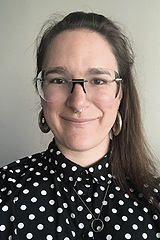 Most of us have had the experience of smelling, tasting, seeing, or hearing something that triggers a sudden vivid memory. In neuroscience, this filling in of a memory is often called pattern completion. For years people have thought that a particular chunk of brain, the trisynaptic circuit of the hippocampus, might be responsible for this process; however, we lacked the tools to test this possibility in a fully satisfying way. Recently, other labs have developed the tools to do so: the ability to measure what is happening in many neurons at once while temporarily manipulating a neural circuit of interest.
Most of us have had the experience of smelling, tasting, seeing, or hearing something that triggers a sudden vivid memory. In neuroscience, this filling in of a memory is often called pattern completion. For years people have thought that a particular chunk of brain, the trisynaptic circuit of the hippocampus, might be responsible for this process; however, we lacked the tools to test this possibility in a fully satisfying way. Recently, other labs have developed the tools to do so: the ability to measure what is happening in many neurons at once while temporarily manipulating a neural circuit of interest.
As a Banting fellow, I will leverage these tools to causally test the idea that the trisynaptic circuit is responsible for pattern completion. If our theories are correct, then the hippocampus should no longer recreate an entire memory from its parts when the trisynaptic circuit is turned off. The outcome of these experiments will thus provide insight into this crucial feature of memory and help us better understand cases in which memory does not function correctly.
Véronique Latreille, Neurology
Stimulating the sleeping brain to improve memory
 Specific brain waves during sleep are believed to play a crucial role in learning by strengthening the brain’s memory traces. We propose that manipulating these sleep waves may enhance the learning process and potentially improve memory function. This work aims to determine if manipulation of sleep using direct brain stimulation can strengthen learning and memory processes. Our study will target adults with refractory seizures, as epilepsy is the only disease where electrodes are inserted into the brain. Furthermore, people with epilepsy also frequently have significant memory impairments, which are highly debilitating and negatively affecting their quality of life.
Specific brain waves during sleep are believed to play a crucial role in learning by strengthening the brain’s memory traces. We propose that manipulating these sleep waves may enhance the learning process and potentially improve memory function. This work aims to determine if manipulation of sleep using direct brain stimulation can strengthen learning and memory processes. Our study will target adults with refractory seizures, as epilepsy is the only disease where electrodes are inserted into the brain. Furthermore, people with epilepsy also frequently have significant memory impairments, which are highly debilitating and negatively affecting their quality of life.
The ultimate goal of our work is to use this knowledge to understand how electrical stimulation during sleep can be used to treat memory dysfunction. It is our hope that this work will ultimately improve quality of life of individuals suffering from memory issues.
Bertrand Lavoie, Law
Ethics, Equality Rights and Religious Values: Collaborative Research with the Clinical Ethics Unit of Sainte-Justine Hospital
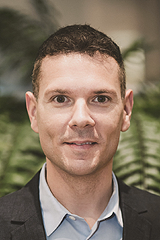 As a Banting Fellow, my research aims to understand how ethical issues related to equality rights and freedom of religion are treated in a pediatric hospital, in order to clarify the important role ethicists play in their daily work. I will work with Professor Daniel Weinstock, in close collaboration with the Unité d’éthique clinique of the Sainte-Justine Francophone Hospital in Montreal (Unité). I will study the functioning of this organization and the influence that the pediatric dimension can have on the resolution of ethical dilemmas in pediatric health care.
As a Banting Fellow, my research aims to understand how ethical issues related to equality rights and freedom of religion are treated in a pediatric hospital, in order to clarify the important role ethicists play in their daily work. I will work with Professor Daniel Weinstock, in close collaboration with the Unité d’éthique clinique of the Sainte-Justine Francophone Hospital in Montreal (Unité). I will study the functioning of this organization and the influence that the pediatric dimension can have on the resolution of ethical dilemmas in pediatric health care.
My collaborative research will foster productive bilingual interactions between the Unité, the Institute of Health and Social Policy (IHSP) and the McGill Faculty of Law. This will address these interdisciplinary challenges and better support and equip pediatric ethicists with research data that has been collected jointly with them.
(Photo courtesy of Manoucheka L)
Recipients of the Canada Graduate Scholarships – Doctoral (CGS D) were also announced. The CGS D program supports high-calibre students engaged in doctoral programs in all academic disciplines. This support allows scholars to fully concentrate on their doctoral studies, to seek out the best research mentors in their chosen fields and contribute to the Canadian research ecosystem during and beyond the tenure of their awards. A CGS D is valued at $35,000 for a duration of 36 months, and 1,000 scholarships are awarded annually.In all, McGill doctoral students earned 103 CGS D scholarships, 18 from CIHR, 34 from NSERC and 51 from SSHRC.
